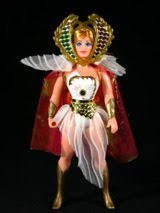
Gasp! This graphic novel was amazing. It took some strategy to get used to reading this style of writing, but once I got comfortable with it, I enjoyed everything about it. It took me back in time to 17th century Korea. I am not sure I would recommend this book for children younger than twelve - there are many controversial issues and themes presented throughout the story and the reading is actually pretty difficult (despite it's picture book appearance). But, for older readers, especially those interested in learning about other cultures and legends, this is a highly recommended graphic novel.
The graphic novel based on a traditional Korean folktale, tells a story about the "illegitimate" second-born son (Hong Kil Dong) of a powerful minister. Hong Kil Dong leaves his father's estate when he realizes he will never be able to "claim his father" or become a man. He discovers magical powers inside himself, and becomes an influential leader among peasants who steal from the corrupt and spread the stolen wealth among the poor.
The art is wonderful, and seems to have been researched thoroughly, as it is reminiscent of what I would imagine the setting of seventeenth century Korea to be like. The picture boxes seem overwhelming at first because there's so much going on. Drawings, speech bubbles, and text boxes everywhere! But, the reader is quickly finding themselves reading everything they can find, the story is so engaging. The author includes some very interesting information in the final pages of the book: about the author, sources, translations, traditional Korean clothing/hairstyle/accessory key, and the 10 symbols of longevity. BONUS!
Time passes in the story, and the author uses wonderful descriptive text to describe it, for instance: "As the grain ripened in the fields..." "Under the brilliant blue skies of autumn..." "As the last winds of winter chilled the air..." The language paints a rich image. The story is written beautifully. The author does something "strange" along the sides of the pages. There is a little symbol made up of a series of lines of varied lengths, following the symbol it will say something like "The creative/active: power of a leader awakens higher nature of men" . . . I don't know what it means, I think it follows the story, but it's another example of an interesting feature in this graphic novel/Korean folktale.


No comments:
Post a Comment